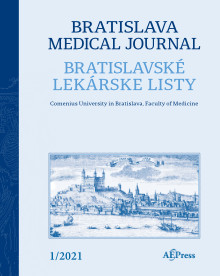Journal info
|
||||
Select Journal
Journals
Bratislava Medical Journal 2024 2023 2022 2021 2020 2019 2018 2017 2016 2015 2014 2013 2012 Ekologia - Ecology Endocrine Regulations General Physiology and Biophysics Neoplasma Acta Virologica Studia Psychologica Cardiology Letters Psychológia a patopsych. dieťaťa Kovove Materialy-Metallic Materials Slovenská hudba 2025Webshop Cart
Your Cart is currently empty.
Info: Your browser does not accept cookies. To put products into your cart and purchase them you need to enable cookies.
Bratislava Medical Journal Vol.124, No.4, p.267–272, 2023 |
||
| Title: Enhanced yield of cholinergic neurons from induced pluripotent stem cells (iPSC): A two-step induction protocol | ||
| Author: Seyed Ehsan ENDERAMI, Maryam Nazm BOJNORDI,Hatef GhasemiHAMIDABADI, Marzieh Sharifi PASANDI | ||
| Abstract: BACKGROUND: Cholinergic neurons, a type of neurons found in central nervous system, play a vital role in muscle movement and activities. Cholinergic neurons degeneration is the main pathological symptom of neurodegenerative diseases. Among a variety of stem cells, iPSCs have emerged as a promising candidate for transplantation to improve the repair of neuronal lesion sites. However, the establishment of an appropriate induction method to yield large numbers of cholinergic neurons has yet to be determined. Here, we studied the differentiation potential of iPSCs to generate cholinergic neurons by developing a new optimized differentiation protocol. METHODS: The iPSCs were harvested on 6-well matrigel-coated plate and incubated with serum‑free DMEM/F12 with 2 % B27 supplement, 20 ng/ml the basic fibroblast growth factor and 20 ng/ml epidermal growth factor for 48 hours. Then, the pre-induced cells were treated in neuronal induction medium supplemented with all-trans retinoic acid, sonic hedgehog, 100 ng/ml glial-derived neurotrophic factor and 200 ng/ml brain-derived neurotrophic factor for 7 days. Cell viability during induction stages was tested by MTT assay. Differentiated cells were evaluated with crystal violet staining, immunocytochemistry and real‑time PCR. RESULTS: Our results showed that the survival rate of iPSCs leveled out and was similar to that in the control group following the differentiation process. Immunochemistry results revealed that the expression of ChAT was observed in cells in both pre‑induction and induction stages with a significantly higher expression level at the induction stage as compared to the pre-induction stage. However, none of these markers was expressed in the iPSCs. Cresyl violet staining confirmed the neuronal phenotype of differentiated cells. The induction group significantly expressed the higher levels of Islet1, Olig2 and HB9, whereas pluripotency markers including those of Oct4 and Nestin plunged. CONCLUSION: Our investigation represents a highly efficient protocol for iPSCs differentiation toward cholinergic neurons which could be used for further preclinical transplantation studies (Tab. 1, Fig. 5, Ref. 35). Text in PDF www.elis.sk |
||
| Keywords: induced pluripotent stem cells, cholinergic neurons, neurotrophic factors, induction protocol, preclinical transplantation | ||
| Published online: 04-Jan-2023 | ||
| Year: 2023, Volume: 124, Issue: 4 | Page From: 267, Page To: 272 | |
| doi:10.4149/BLL_2023_040 |
||
|
|
 download file download file |
|

